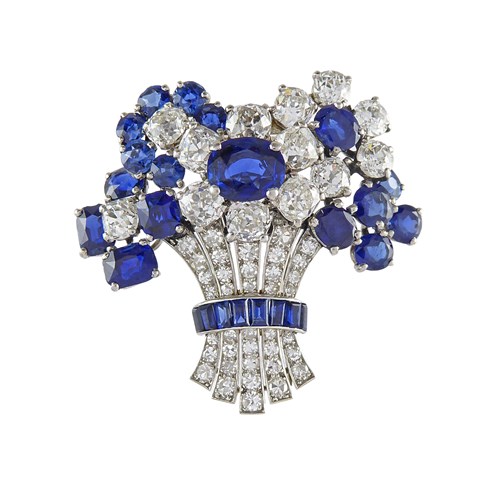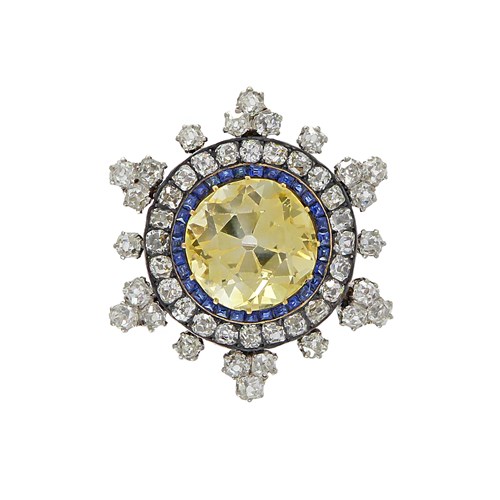Louis XV gold and enamel mounted Japanese lacquer snuff box, rectangular with cagework mounts,
Date 1749
Epoque Louis XV
Origine Paris
Medium gold, Enamel
Dimension 7.9 x 5.8 x 4.2 cm (3¹/₈ x 2¹/₄ x 1⁵/₈ inches)
LITERATURE
Associated literature:
Francis Watson, 'Beckford, Mme de Pompadour, the duc de Bouillon and the taste for Japanese lacquer in eighteenth century France', Gazette des Beaux-Arts, 61, 1963, pp. 101-127;
Clare Le Corbeiller, 'East and West and the Gold Box', Apollo, September 1969, pp. 250-252;
Vincent Bastien, 'Jean Ducrollay et l'orfevrerie à Paris au XVIIIe siecle', in ed. Stephane Castellucio, Le commerce du luxe à Paris au XVIIe et XVIIIe siecles, Paris, 2009, pp. 133-149
Both as a result of his family connections and as an innovatrive craftsman, Jean Ducrollay holds a pre-eminent position among Paris gold box makers of the mid eighteenth century. Apprenticed in 1722 to his uncle Jean Drais who acted as his sponsor when he became master in 1734 from the rue de Lamoignon, by 1748 he had moved to the place Dauphine where he and his younger brother Jean-Charles worked until 1761 when they sold the business to Jean-Marie Tiron de Nanteuil. Ducrollay was named orfevre-joaillier to the Crown and to the Court supplying the Menus Plaisirs as well as a most distinguished clientele which included Madame de Pompadour (for whom he produced a chased gold coffee-mill, 1756/7, now in the Louvre) and the duc d’Aumont (for whom he created the famous gold and enamel snuff box, 1744, decorated with peacock’s feathers, now in the Wallace Collection). For more complete details about Ducrollay’s life and business arrangements, see Vincent Bastien, ‘Les Ducrollay’, L’Objet d’Art, no. 415, Juillet-Aoыt 2006, pp. 60-69.
Although Ducrollay employed all the techniques and materials available to goldsmiths at that time in the creation of his gold boxes, from exquisitely simple engine-turning to hardstone, enamel, porcelain and jewels, his use of fashionable Japanese lacquer is well recorded. His name appears several times in the Livre-journal de Lazare Duvaux, Marchand Bijoutier ordinaire du Roy, 1748-1758, (ed. Jean Cordey, Paris, 1873) in connection with the purchase of Japanese lacquer panels, presumably for insertion into snuff boxes such as this or carnets or other small mounted objects. Another lacquer box of 1752/3 by Ducrollay with very similar flowery gold and enamel mounts further embellished with blue ribbons, is to be found in the Thurn and Taxis Collection (Lorenz Seelig, Golddosen des 18. Jahrhunderts aus dem Besitz der FUrsten von Thurn und Taxis, Munich, 2007, no. 2).
Weight: 147g
Date: 1749
Epoque: Louis XV
Origine: Paris
Medium: gold, Enamel
Dimension: 7.9 x 5.8 x 4.2 cm (3¹/₈ x 2¹/₄ x 1⁵/₈ inches)
Literature: Associated literature:
Francis Watson, 'Beckford, Mme de Pompadour, the duc de Bouillon and the taste for Japanese lacquer in eighteenth century France', Gazette des Beaux-Arts, 61, 1963, pp. 101-127;
Clare Le Corbeiller, 'East and West and the Gold Box', Apollo, September 1969, pp. 250-252;
Vincent Bastien, 'Jean Ducrollay et l'orfevrerie à Paris au XVIIIe siecle', in ed. Stephane Castellucio, Le commerce du luxe à Paris au XVIIe et XVIIIe siecles, Paris, 2009, pp. 133-149
Both as a result of his family connections and as an innovatrive craftsman, Jean Ducrollay holds a pre-eminent position among Paris gold box makers of the mid eighteenth century. Apprenticed in 1722 to his uncle Jean Drais who acted as his sponsor when he became master in 1734 from the rue de Lamoignon, by 1748 he had moved to the place Dauphine where he and his younger brother Jean-Charles worked until 1761 when they sold the business to Jean-Marie Tiron de Nanteuil. Ducrollay was named orfevre-joaillier to the Crown and to the Court supplying the Menus Plaisirs as well as a most distinguished clientele which included Madame de Pompadour (for whom he produced a chased gold coffee-mill, 1756/7, now in the Louvre) and the duc d’Aumont (for whom he created the famous gold and enamel snuff box, 1744, decorated with peacock’s feathers, now in the Wallace Collection). For more complete details about Ducrollay’s life and business arrangements, see Vincent Bastien, ‘Les Ducrollay’, L’Objet d’Art, no. 415, Juillet-Aoыt 2006, pp. 60-69.
Although Ducrollay employed all the techniques and materials available to goldsmiths at that time in the creation of his gold boxes, from exquisitely simple engine-turning to hardstone, enamel, porcelain and jewels, his use of fashionable Japanese lacquer is well recorded. His name appears several times in the Livre-journal de Lazare Duvaux, Marchand Bijoutier ordinaire du Roy, 1748-1758, (ed. Jean Cordey, Paris, 1873) in connection with the purchase of Japanese lacquer panels, presumably for insertion into snuff boxes such as this or carnets or other small mounted objects. Another lacquer box of 1752/3 by Ducrollay with very similar flowery gold and enamel mounts further embellished with blue ribbons, is to be found in the Thurn and Taxis Collection (Lorenz Seelig, Golddosen des 18. Jahrhunderts aus dem Besitz der FUrsten von Thurn und Taxis, Munich, 2007, no. 2).
Plus d'œuvres d'art de la Galerie









